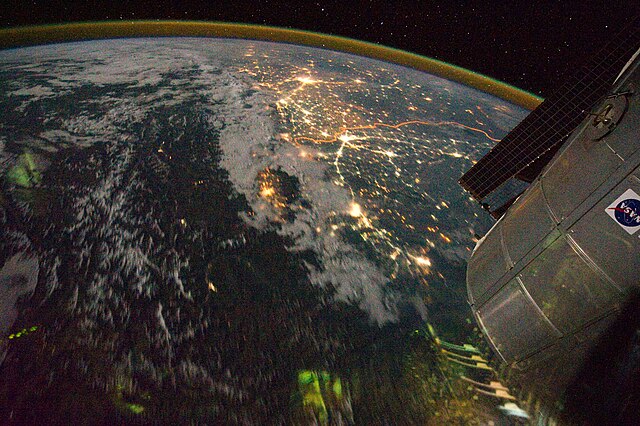Khādir or Khadar and Bangar, Bāngur or Bhangar are terms used in Hindi, Urdu, Punjabi and Sindhi in the Indo-Gangetic plains of North India and Pakistan to differentiate between two types of river plains and alluvial soils. Bangur and Khadir areas are commonly found in the doab regions. Some villages may have both Khadar and Bangar areas within their revenue boundaries. Bhangar soils are less fertile as they are above flood level whereas Khadar soils are more fertile as they are below the flood level. Bhanger is full of kankers while khadar soil is composed of fine silt and clay.
It is fertile land as it contains alluvial soil deposited by rivers.
In any doab, khadar land (green) lies next to a river, while bangur land (olive) has greater elevation and lies further from the river
The Indo-Gangetic Plain, also known as the North Indian River Plain, is a 700-thousand km2 (172-million-acre) fertile plain encompassing northern regions of the Indian subcontinent, including most of modern-day northern and eastern India, most of eastern-Pakistan, virtually all of Bangladesh and southern plains of Nepal. Also known as the Indus–Ganga Plain, the region is named after the Indus and the Ganges rivers and encompasses a number of large urban areas. The plain is bounded on the north by the Himalayas, which feed its numerous rivers and are the source of the fertile alluvium deposited across the region by the two river systems. The southern edge of the plain is marked by the Deccan Plateau. On the west rises the Iranian Plateau. Many developed cities like Delhi, Dhaka, Kolkata, Lahore, Islamabad and Karachi are located in the Indo-Gangetic Plain.

Clusters of yellow lights on the Indo-Gangetic Plain reveal numerous cities large and small in this photograph of northern India and northern Pakistan, seen from the northwest. The orange line is the India–Pakistan border.
A part of the Indo-Gangetic Plain over Northern, Central and Eastern India as well as its neighbouring countries



